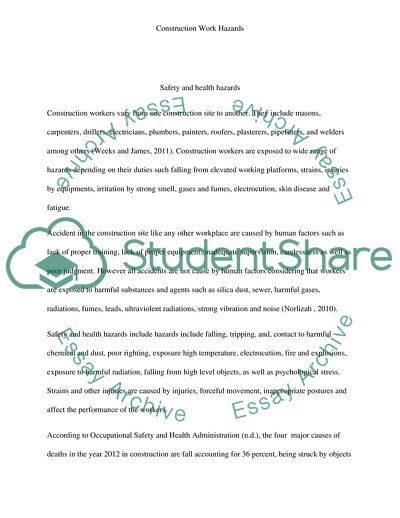Cite this document
(Construction Work Hazards Term Paper Example | Topics and Well Written Essays - 2500 words, n.d.)
Construction Work Hazards Term Paper Example | Topics and Well Written Essays - 2500 words. https://studentshare.org/engineering-and-construction/1807828-construction-work-hazards
Construction Work Hazards Term Paper Example | Topics and Well Written Essays - 2500 words. https://studentshare.org/engineering-and-construction/1807828-construction-work-hazards
(Construction Work Hazards Term Paper Example | Topics and Well Written Essays - 2500 Words)
Construction Work Hazards Term Paper Example | Topics and Well Written Essays - 2500 Words. https://studentshare.org/engineering-and-construction/1807828-construction-work-hazards.
Construction Work Hazards Term Paper Example | Topics and Well Written Essays - 2500 Words. https://studentshare.org/engineering-and-construction/1807828-construction-work-hazards.
“Construction Work Hazards Term Paper Example | Topics and Well Written Essays - 2500 Words”. https://studentshare.org/engineering-and-construction/1807828-construction-work-hazards.


